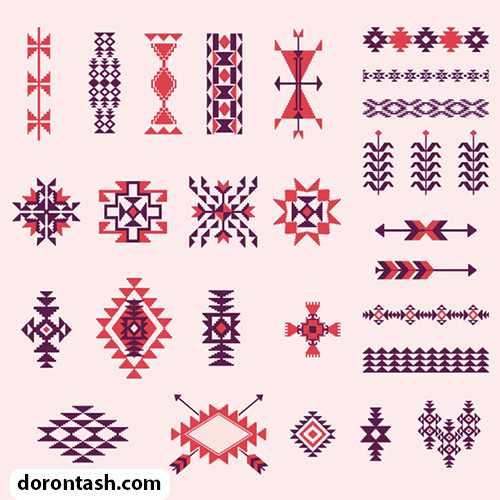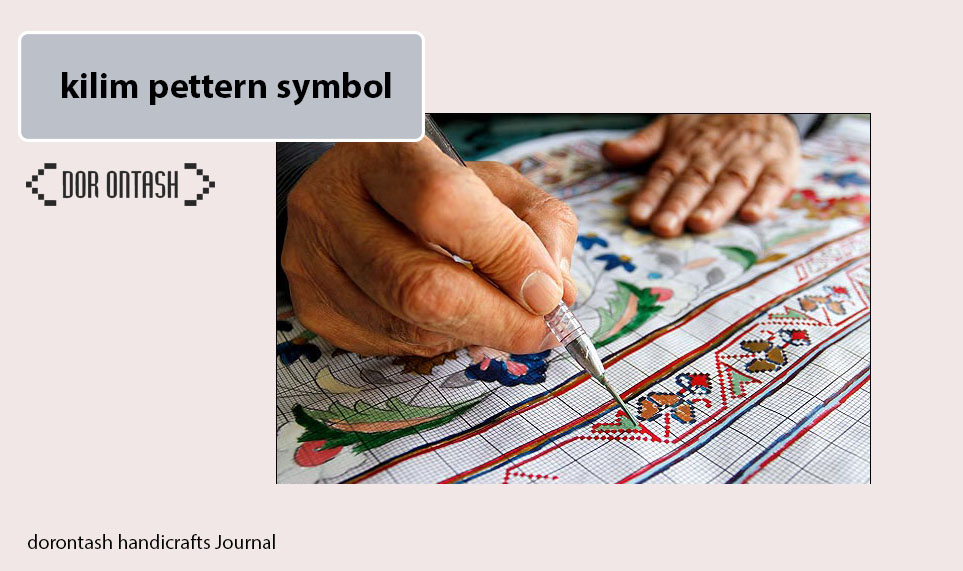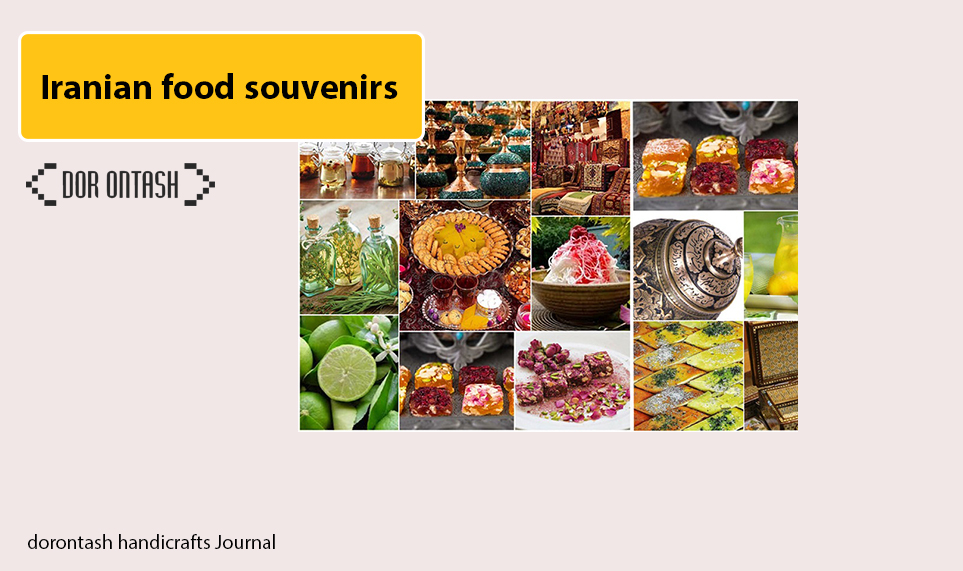persian kilim
Galim is a type of carpet with a simple texture that is woven with wool and cotton and in some cases with wool and goat hair. Threads of taropod pass under and over each other. Like the simple weaving of a basket. Carpet is popular as a women’s craft in nomadic and rural areas of Iran. The means of carpet weaving is based on horizontal or vertical threads. This carpet is widely used due to its cheapness. According to the different regions that weave it, the Iranian rug has various weaving methods and patterns.
pesrian kilim bags
persian carpet
A rug or carpet is a wide type of woven fabric made of cotton, wool and in some cases silk, which is usually used to cover the ground. It is called carpet with fluffy and knotted hands. Since rugs and carpets have always had beautiful roles, nowadays attention is also paid to their decorative aspect. From 2013 onwards, Kashan city was introduced as the carpet capital of the world and this lasting work was registered in UNESCO’s tangible heritage with number 00383. Currently, more than 1,200 factories producing machine-made carpets and 700 workshops producing hand-woven carpets are operating in Kashan, Aran and Bidgol regions. Exporting carpets in Iran is one of the most profitable economic activities.
 persian carpet and kilim are a remnant of the original ancient art
persian carpet and kilim are a remnant of the original ancient art
A rug of Turkish origin refers to a thick woven fabric that does not have threads or long fibers and has many uses and is produced by one of several flat weaving techniques. In fact, the main difference between the carpet and the traditional rug is the long knotted fibers that are present in the carpet and the traditional rug lacks it. The pattern of the carpet is formed with the help of these fibers and by different colors, while the traditional rug designs are made by mixing different colored taropods. Traditional carpet has a long history and has seen many empires over thousands of years. The traditional carpet is the common heritage of different geographical regions such as Turkey (Anatolia and Thrace), North Africa, Balkans, Caucasus, Iran, Afghanistan, Pakistan, Central Asia and China. Traditional carpets have been used for various purposes since ancient times. Among the uses of traditional rugs, we can mention covering the floors of mosques, prayer rugs, bags and shoes, saddle covers, wall decorations and handicrafts of nomadic peoples.
Raw materials for persian carpet and kilim
kilim raw materials
One of the characteristics of carpets is the abundance of raw materials, and for this reason, it is produced among different ethnic groups. The raw materials of the rug are sheep wool, camel wool, goat and horse hair, and cotton. Since nearly ten thousand years ago, when humans engaged in animal husbandry and animal breeding, sheep’s wool gradually turned into long and soft fibers that could be spun. The properties of wool are very different from hair, cotton and silk. There are knots on the surface of wool fibers, which give it a tangled property when spinning, and woolen fabrics, due to the high percentage of fat,
It is excellent insulation and has excellent formability. Wool picking is done once or twice a year, and it is usually done after the end of the cold winter in April and May, or after the migration of the herd to the summer pastures. It starts in coastal and warmer areas like Saudi Arabia and southern Iran in March and in mountainous areas with colder weather like northeastern Iran and Afghanistan in June. The wool yield of each sheep is from one to three kilos, and to wash it, the flock is either passed through a stream or a river, or the wool is picked and then washed.
Carpet raw materials
One of the most important criteria for determining the quality, valuation and even knowing the location of the carpet texture is the raw materials used in it. The main raw materials in the production of handmade carpets are wool, fluff, silk and cotton thread. The importance of the type and quality of each of these raw materials is so important that they can play a decisive role in the value and price of the carpet. In the next article, we will try to familiarize you more with these raw materials so that you can get to know more about handwoven carpets.
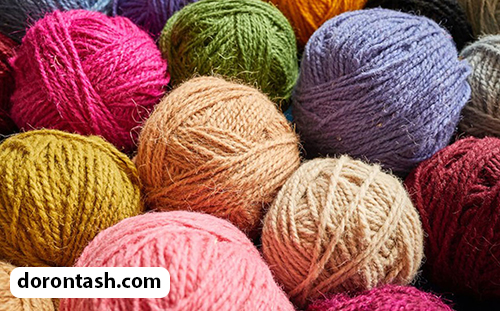
wool
One of the most important and widely used raw materials needed for carpet weavers is wool. The breed of sheep affects the quality of wool used for carpet weaving. The quality of the obtained wool depends on several factors.
crack
Fluff refers to the soft wool that remains between the combs of animals such as sheep, goats, and camels during combing. Fluff is one of the components of delicate and relatively expensive carpets.
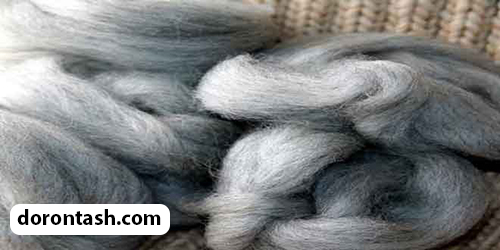 silk
silk
Silk is much stronger than wool fibers. Silk is produced in two natural and artificial ways. Its natural type is produced from silk cocoons. In this method, several thin strands of silk are woven around each other, and as a result, the original silk suitable for weaving is obtained.
cotton thread
Cotton (or linen) is also another raw material of carpet texture. Cotton has a plant origin and is obtained from the cotton boll, which is a bush plant product. Cotton fibers have various uses, and in the textile industry, they are used for making carpets, fabrics, carpets, rugs, and other types of carpets.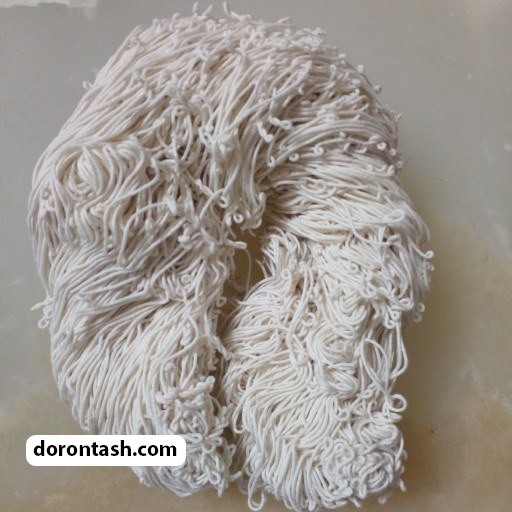
persian carpet and kilim hanger
kilim weavers hanger
Glimbuffy doors are very simple. But their simplicity has nothing to do with the type of texture that is produced by them. Complex textures are also done with simple threads.
According to tradition, weaving is the responsibility of women. Men often accompany women in erecting houses and pulling boats. Recently, very young men are also involved in weaving carpets for sale. In Glimbafi, sleeping doors are mostly used. Each tribe and region uses different tools. The weaver either makes the weaving tools at home or buys them from local markets. The combs are used to beat the wefts and arrange the distance between the threads and are made entirely of wood or long metal teeth. Keju and Haf (wood for separating more threads) are made from smooth and polished wood. Scissors and knives are made either by local blacksmiths, or by CIA workers
 Carpet weavers hanger
Carpet weavers hanger
Carpet rug is one of the components of the texture of all kinds of carpets and rugs. It doesn’t matter what size the woven carpet is, for every size and type of carpet, we need suitable carpet hangers. If this important element does not exist in the carpet weaving industry, carpet weaving will not be possible. The basis of all rugs is a frame consisting of two horizontal sticks and two vertical sticks, which are tied to each other using tools, and other carpet weaving tools are mounted on it.
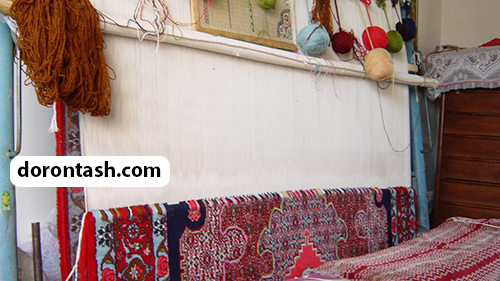 All kinds of persian carpet and kilim
All kinds of persian carpet and kilim
· Ground or horizontal carpet looms: The first carpet looms that ancient people used to weave carpets were these types of looms that were located on the ground.
· Standing carpet dars: After a period of time, standing carpet dars were invented and replaced ground carpet dars. Perhaps one of their most important features was occupying less space for carpet weaving operations.
· Movable standing rack: This type of rack was used for carpets that were large and needed to be moved.
Fixed standing carpet looms: This type of carpet looms, which are widely used recently, are suitable for weaving carpets.
Vertical carpet loom: Vertical carpet loom is one of the most important types of carpet loom, which currently has the largest share in the carpet weaving industry and exists in various types. Human progress in the field of carpet weaving led to the invention of vertical carpet looms. Vertical looms are leaned against the wall and unlike horizontal looms, they take up less space and are easier to weave in. Among the varieties of this variety, we can refer to Thabit, Tabrizi and Kermani.
Patterns of persian carpet and kilim
kilim patterns
Many motifs are used in Iranian rugs , each of which has a great diversity in its own kind. Geometric shapes are the most repeated designs in traditional Iranian rugs, which are derived from shapes such as rhombuses, squares, rectangles, triangles, etc., in addition to geometric designs, a combination of animal, human, and plant symbols can also be seen, each of which It is a symbol of a belief and thinking. One of the designs that can be seen in the patterns of traditional rugs is Rab-ul-Nauw Mother, which is a female or maternal figure with a fertility state, as well as male and female motifs, both of which are symbols of fertility. Among the animal motifs used in the designs of traditional rugs, we can mention snake and dragon, crab, turtle, horse, ram, all kinds of birds, goat, etc., each of which expresses belief in a specific phenomenon in the belief and culture of different nomads and tribes. .
Persian carpet patterns
The motifs of the Persian carpet have made the Persian carpet unique, because it has many variations and creates pleasant designs with beautiful colors. One of the motifs of Iranian carpets is Slimi, which has many types, and this design is usually repeated in most formats. The most famous Slimi is the Torpedo Mouth Slimi, where the end of each branch branches into two symmetrical parts and is shown in the shape of a dragon’s jaw.
Buds can be seen in different places on the stem of the branches, and most of these buds are called slime. In the design of flower sprinkling, leaves and branches are scattered scatteredly and without connection with each other in the text of the carpet. Contagious design where a small piece of a design is repeated throughout the length and width of the carpet.
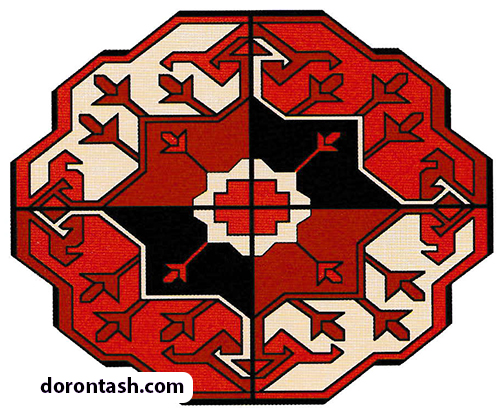 Types of persian carpet and kilim
Types of persian carpet and kilim
In the balanced texture
, the number of wefts is more than the threads and the threads are not visible, and the color of this type of carpet is determined by the wefts. This method is widely used in glimbafi in different regions of the world. This type of texture is seen on the sides of the rug.
powdery texture
Plain weave or jajimbaf is the opposite of weft. One of the other methods of carpet weaving is oribab. Grooved texture is another method that is very common and until about 20 years ago, it was the only indicator of rugs. There are many different and complicated weaving methods in carpet weaving, such as carpet weaving with suspended weft, jagimbaf with suspended thread, patchwork, spinning weave, glimbaf with a pair of hooks, etc.
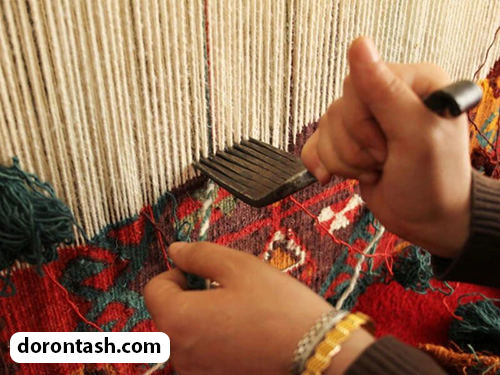 oblique texture
oblique texture
Cracked texture
One of the most important factors in the strength, quality and beauty of the carpet is the final finish. The method of closing the ends of broken wefts, the strength of the threads and the type of color used in them, the texture and decoration of the transverse sides of the rug, the way of tying the roots and the presence of additional ornaments all lead to the completion of handwoven.
The structure of persian carpet and kilim
The structure of the carpet
The rug is produced by interlacing the woven taropod yarns, creating a smooth, lint-free surface. The weft threads, which have a visible pattern and color, are usually made of wool, while the warp threads, which are hidden under the surface of a traditional rug, can be wool or cotton. We can see the threads like carpet roots only at the end, where they appear as borders. Threads are usually tied in bundles at the roots of traditional carpets to prevent the fabric from loosening or unraveling. In this case, the horizontal weft strands are firmly pressed down so as to hide the vertical warp strands.
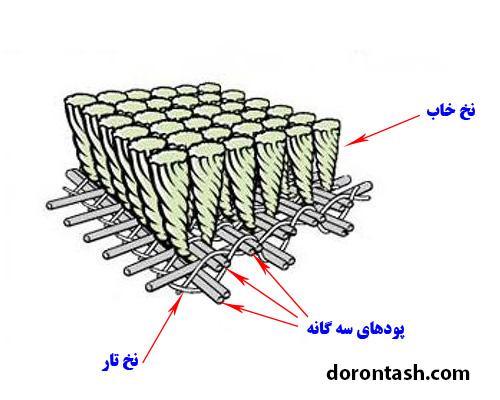
ساختار فرش ماشینی – قالی کاشان
The structure of the kilim
Weft (the most important issue in the structure of the carpet): When talking about the structure of the carpet, it does not matter whether the carpet is hand-woven or machine-made. The first issue in this case is their texture. Tar refers to the threads that are tied from the top to the bottom of the carpet weaving. The weft is also the threads that are stretched from the left side to the right side and are passed under and over the threads one by one and interwoven with the thread.
Carpet knot (supplement in the carpet structure): the knots are wrapped around the warp and between the structural wefts and then cut with a knife or hook. Basically, it can be said in a simple way that the threads play a longitudinal role and the weft plays a transverse role in the structure of the carpet. The knots are also considered as the third dimension of the carpet and determine the height of the handwoven carpet structure and protrude from the surface of the carpet.
Application of persian carpet and kilim
From the carpet for various purposes, including covering and insulating the floor heat and sound, to decorate and create a beautiful effect in the bedroom and living room, as decorative wall hangings, as a sofa shawl in traditional decorations, and also in woven artifacts from the carpet cover. Traditions such as bags and shoes and all kinds of decorative dishes are used, all of which create a pleasant feeling of combining color and pattern, connecting every viewer to the depths of ancient art. The use of traditional carpets in traditional decorations can be the last stop that brings a design closer to its most traditional effect. Nowadays, we feel the presence of traditional rugs more and more in many traditional places, including dining rooms and tourist centers.
Handwoven silk carpets with unique self-luminescence have a luxurious luster and a very soft texture. This precious and luxurious fiber is used in the carpet industry as a great magical effect in making the designs shine. For this reason, most silk carpets are like a rare and precious work of art. The rarity of these carpets has also attracted the attention of some collectors.
Silk carpets are easy to sweep, and cleaning them is very easy because of the short, free threads in the carpet texture. But it is recommended to leave the washing of these sensitive carpets to the hands of carpet cleaners and experienced people.
Among the other uses of silk carpets, it can be said that these precious carpets are also used as carpets in the decoration of homes and restaurants due to their delicate and colorful patterns.
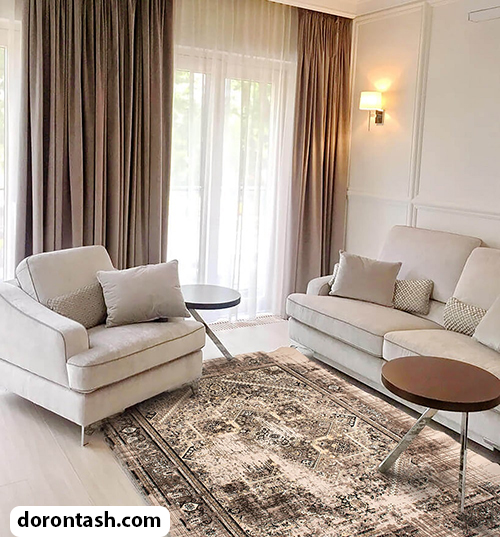 Also, Iranian silk carpets and rugs do not have electrical properties. That is, by walking on it with woolen socks, electric induction does not take place, and this makes you comfortable.
Also, Iranian silk carpets and rugs do not have electrical properties. That is, by walking on it with woolen socks, electric induction does not take place, and this makes you comfortable.
One of the most important positive features of silk carpets is their durability. Silk carpets do not lose their original color and state after washing.


